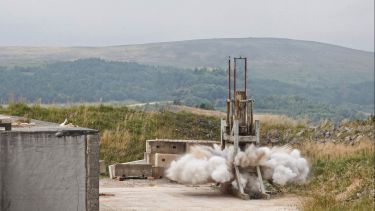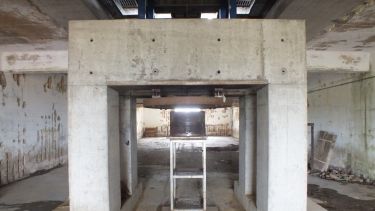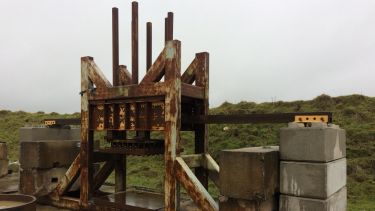Sheffield Blast and Impact Group
Our research covers experimental quantification of high explosive blast loading.

On
Our research covers experimental quantification of high explosive blast loading (including buried charges), high strain rate material characterisation (solids and geomaterials), numerical analysis and machine learning for blast in complex environments, structural response calculations, and development of quick running methods.
Research topics
- Blast Loading Characterisation
- Structural Response
- Digital Image Correlation
- High Strain Rate Material Response
- Buried Charges
Current projects
Mechanisms and Characterisation of Explosions
Recent projects
Further projects can be found on the Our Research Projects webpage.
Facilities and resources
Our engineering activities make use of a variety of innovative facilities and resources.
- Characterisation of Blast Loading (CoBL)
-
- Measuring reflected pressures from both free-air and buried explosives.
- X-shaped array of 17 Hopkinson pressure bars.
- Able to investigate the effects of confining and mitigating materials on the explosive output.
- Unique equipment world-wide.
- Blast Pad
-
- General purpose explosives arena for near- and far-field testing.
- High speed video and zebra wall, for tracking of shock front.
- Tests up to 1000 grams of high explosive are possible.
- Measurements of incident and reflected pressures possible, with world-leading levels of repeatability.
- Applique
-
- Investigations into the performance of armour systems against buried explosives.
- Benchmark testing for Dstl on new and novel armour systems.
- Tests up to 1000 grams of high explosive are possible.
- Testing done at ½ scale of AEP-55.
- Stereo high speed video possible for back face DIC.
- Internal pressure measurement
-
- Capable of containing 50 gram high explosive charges.
- Measurements of internal pressure currently possible, with rapid temperature measurement systems being currently developed
- Large gas gun
-
- 120 mm smooth bore gun.
- Capable of launching a 5 kg mass at up to 600 m/s.
- Containment cell capable of soft capture of projectiles.
- Protective systems up to ~2 x 2 x 1.5 m can be accommodated.
- Fragmentation cell
-
- Reinforced, buried chamber Capable of internal blasts of up to 500 g of high explosive.
- Containment cell capable of soft capture of fragments.
- High speed video to determine fragment velocity also possible.
- Measurements of internal pressure (QSP).
- SHPB Apparatus
-
- Compressive testing of materials in unconfined, fully confined and a unique triaxially confined apparatus.
- Range of bars available to test materials from foams up to high strength steels.
- Direct impact, tensile and Taylor testing also possible.
People
| Name | Research discipline | Title |
|---|---|---|
| Clarke, Prof. Sam | Blast and Impact | Professor in Blast Geotechnics |
| Curry, Dr Richard | Blast and Impact | Lecturer - Mechanical Engineering |
| Ozdemir, Dr Zuhal | Concrete Structures Blast and Impact Earthquake Engineering Group | Lecturer in Structural Engineering |
| Rigby, Dr Sam | Blast and Impact | Senior Lecturer in Blast and Impact Engineering |
| Tyas, Prof. Andrew | Computational Mechanics & Design Blast and Impact | DSTL/Royal Academy of Engineering Research Chair in Blast Protection Engineering |







